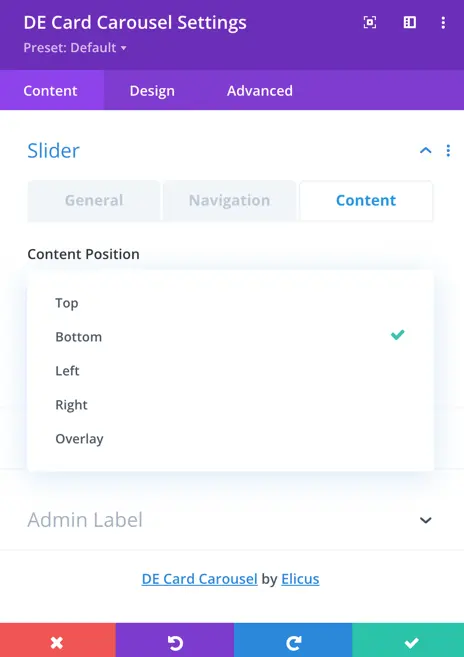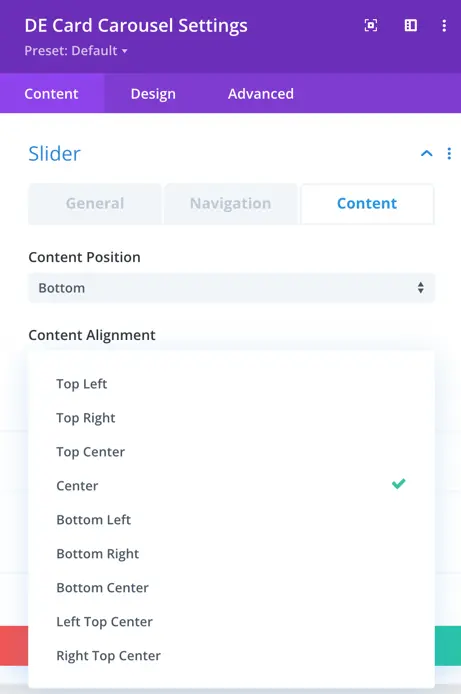Search All In One Carousel for Divi Documentation
Search for answers or browse our knowledge base.
DE Card Carousel
The Card Carousel presents your content with seamless slider effects, offering a visually stunning experience. This highly customizable carousel plugin is ideal for various business websites and blogs, providing an appealing and engaging display.
How To Add Module on Page
Once the plugin All In One Carousel for Divi is activated, it adds modules to the Divi builder. To insert the card carousel module, use the following steps.
- Create or edit a page that uses the Divi Builder.
- Create or edit a row.
- Create or edit a column.
- Go to the module options.
- Search for the module DE Card Carousel.
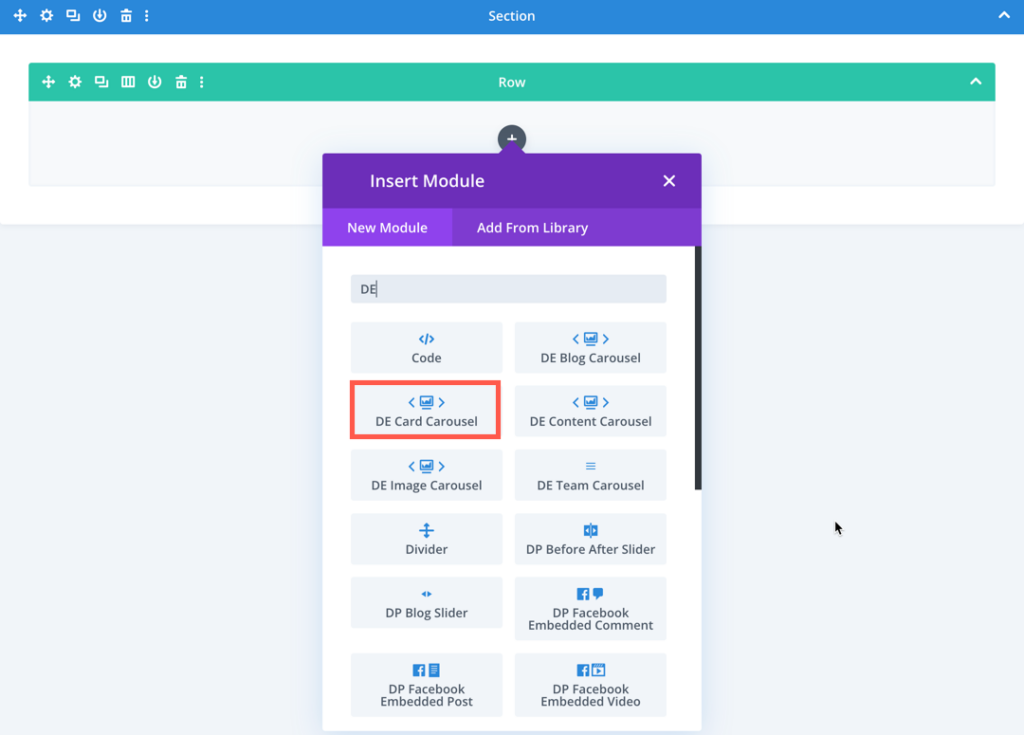
Content
In this section, you can add a new cart to your carousel by clicking the plus icon. Additionally, you have access to slider and background options for further customization.
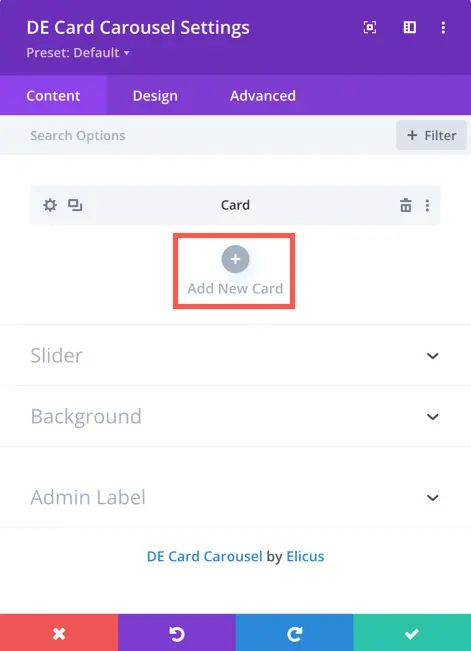
Once you’ve added a new card, you gain access to settings specifically for that added item.
Content
- Title: Enter the content title for the carousel image.
- Subtitle: Add supplementary information in the subtitle field.
- Content: Input the main text content.
- Content-Length: Specify the character limit for the content; set to 0 for no content display.
- Label: Provide the label text for the item.

Image
Image: This setting allows you to upload or select an image to be displayed in the card.
Image Alt Text: Here you can specify the alternative text for the image, which is displayed if the image fails to load or for accessibility purposes.
Label: This setting allows you to add a label or text overlay on the image.
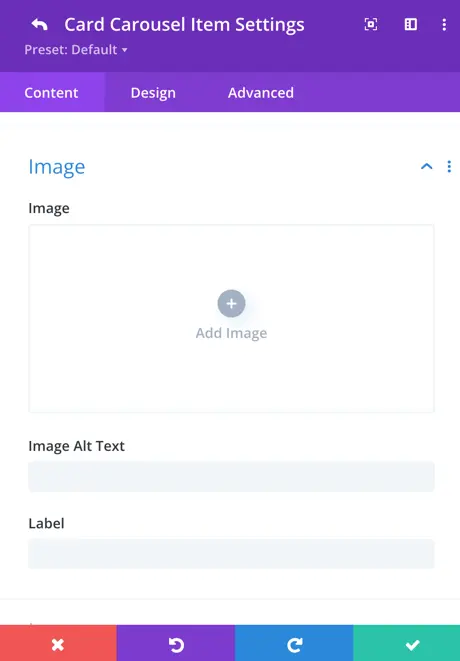
Icon
Here you can select the icon to be displayed on the card. You can choose from a variety of predefined icons.
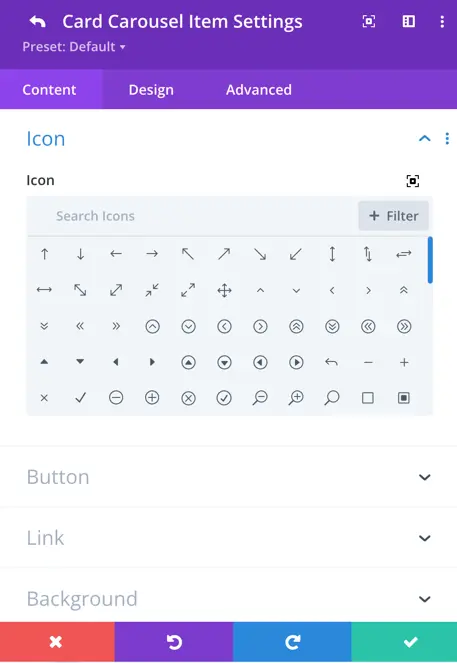
Button
Button:
- Show Button: Toggle this option to display or hide the button on the card.
- Button Text: Enter the text you want to display on the button.
- URL: Specify the URL that the button should link to.
- Link Target: Choose whether the link should open in the same tab or a new tab/window.

Second Button:
- Show Second Button: Toggle this option to display or hide a second button on the card.
- Second Button Text: Enter the text you want to display on the second button.
- Second Button URL: Specify the URL that the second button should link to.
- Second Button Link Target: Choose whether the link should open in the same tab or a new tab/window.

Slider
General
Within the Card Carousel settings, you can customize the appearance and behavior of your carousel for an engaging user experience.
- Carousel Effect: Choose from four dynamic effects – slider, cube, coverflow, or flip – to determine how the cards transition within the carousel.
- Cards Per View: This setting controls the number of cards that are visible at one time, with the default value set to 3.
- Cards Per Group: Define the number of cards that move as a group, affecting the scrolling behavior.

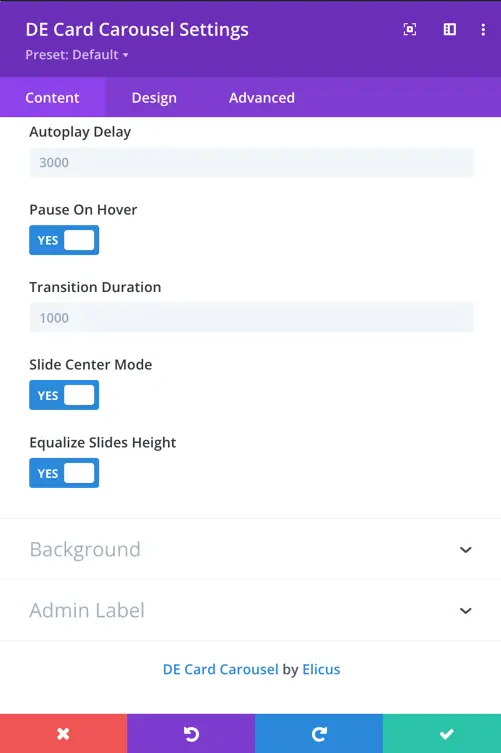
- Space Between Cards: Set the space or gap between individual cards.
- Enable Loop Toggle: Activate this toggle to enable continuous looping of the carousel.
- Autoplay: Toggle the autoplay feature to make the carousel automatically scroll.
- Autoplay Delay: Customize the delay in milliseconds between each card transition during autoplay.
- Pause On Hover: When enabled, the carousel will pause scrolling when a visitor hovers over it.
- Transition Duration: Define the speed at which card transitions occur.
Navigation
Navigation settings provide control over how to display arrows, customize their appearance and behavior, use dots for pagination, and choose from various styles to match your design.
- Show Arrows: This toggle enables or disables the display of navigation arrows, allowing users to manually navigate through the carousel using left and right arrows.
- Arrow On Hover: When enabled, the navigation arrows are hidden by default and appear when the user hovers the cursor over the carousel.
- Show Dots Pagination: Enabling this option adds dot-style pagination indicators that correspond to each slide in the carousel.
- Dots Pagination Style: You can choose the style of the dot pagination, customizing its appearance to match your overall design.
- Enable Dynamic Dots: Dynamic dots automatically adjust in size and spacing to indicate which slide is currently active.
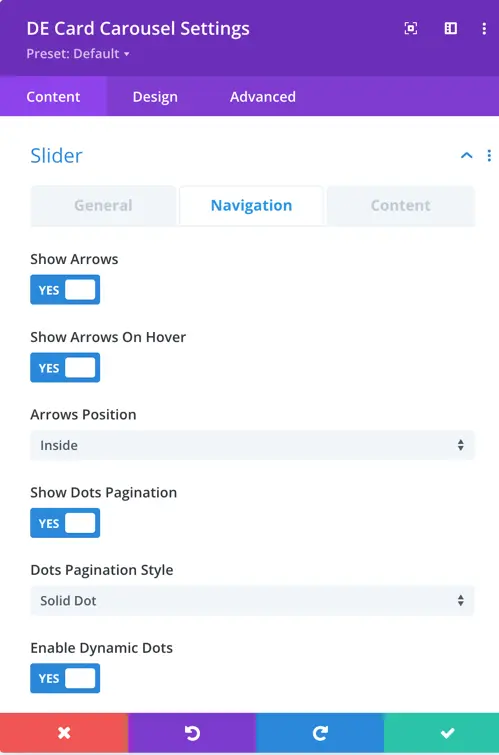
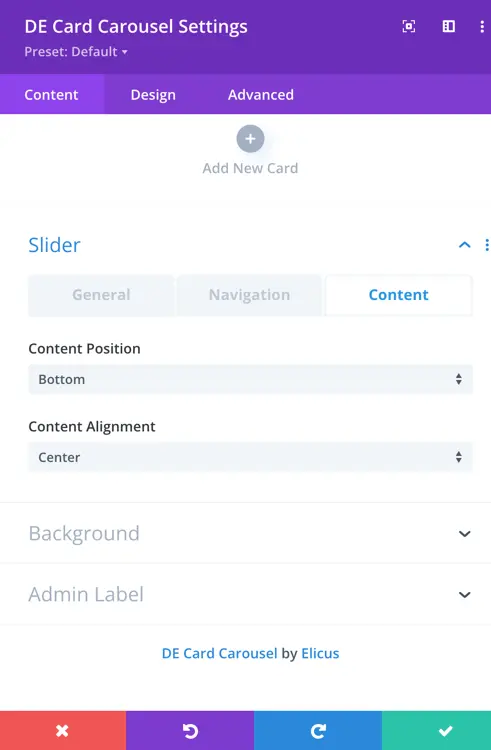
Content
In the settings for content positioning and alignment within the slider, you have the option to control where the content appears and how it aligns with the slider images.
You can choose between several positions for the content: top, bottom, left, right, or overlay. If you select “top,” the content will be positioned at the top of the slider; if you choose “bottom,” it will be at the bottom, and so on.
Additionally, you can specify the alignment of the content within its position. Options include aligning it to the top left, top right, top center, center, bottom left, bottom right, bottom center, as well as options for corner alignments like left top and right top. Also, there’s a “center” option to centrally align the content both vertically and horizontally within the slider.
